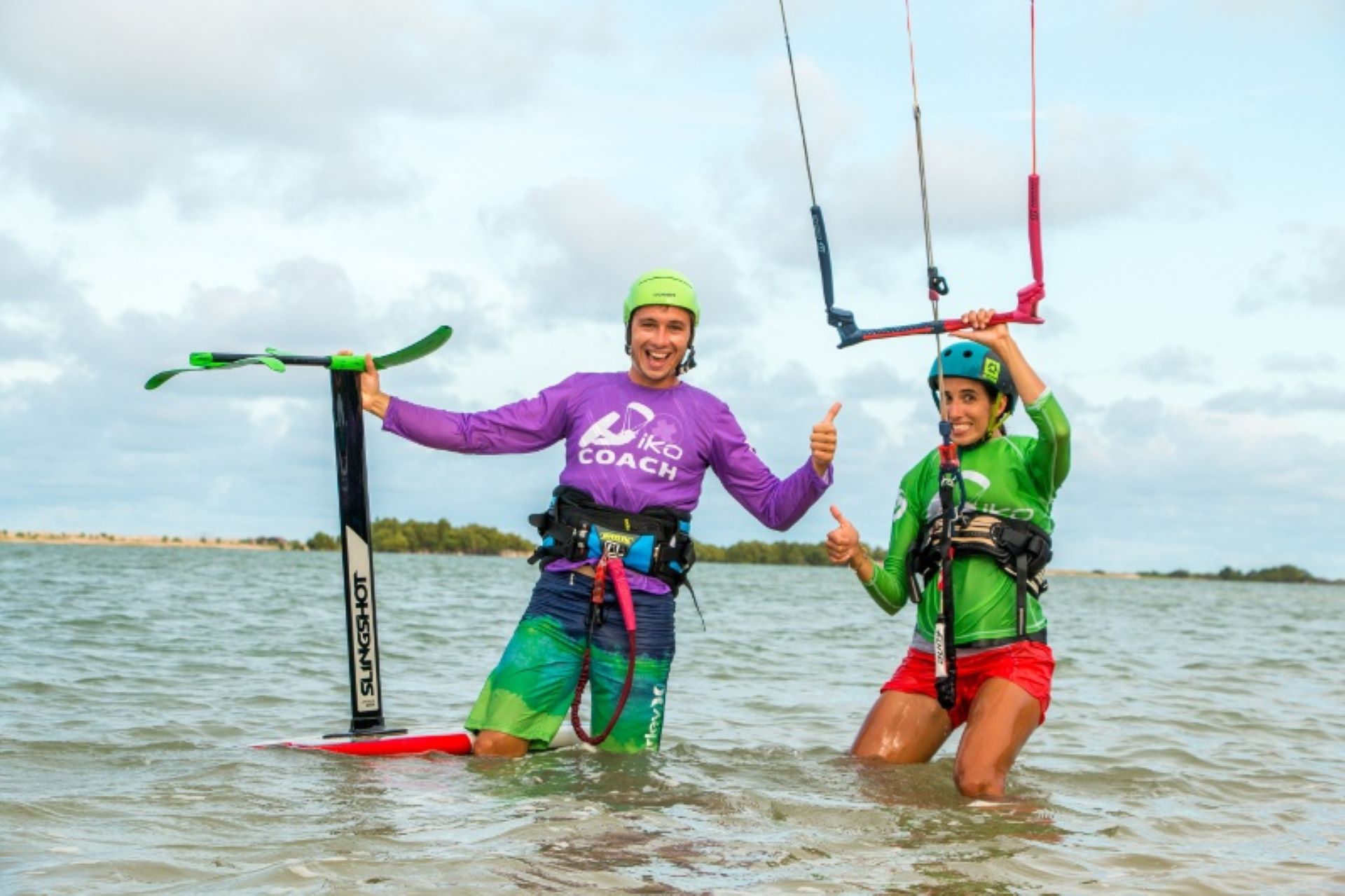When beginning to hydrofoil; use the shortest mast available. When you enter the water, keep your mast above the water until you are deep enough so your mast does not touch the bottom to avoid damages.

Make sure you are learning on a normal windy day in an uncrowded area with lots of room downwind from you. We do not recommend learning to foil in light wind conditions. You should try to learn in similar wind conditions to when you would use a twin tip or directional. When you will be attempting to foil use the same kite movements you would when with a twin tip or directional.
Read and try to visualize each step before going out:

1. Power stroke your kite as usual BUT instead of putting most of your weight on your back foot as you are used to, put it on your front foot and to make it easier, bring your back foot forward around 10/15 cm (compared to the back strap) so the foil is more likely to stay in the water (which is your first objective).
2. Maintain the front foot pressure and try to keep the board on the water.
3. After 100m carefully stop, let go the board and keep your legs away from the foil.
4. Turn the board in the opposite direction.
5. Come back riding.
6. Remember to stop where you started and that under your board, there is a sharp fin that can easily hurt you as well be damaged. Practice over and over until you feel comfortable. Start riding in all directions keeping the board in the water. You can also practice s-turns, jibes and tacks. This will help you greatly for further progression.



A shorter mast will be a huge advantage as in case the board kicks off the water - which is a typical mistake at the beginning - it won’t get too high and crashes won’t be as bad/dangerous either. A shorter-training mast will enable a faster progression.
Do not be afraid to crash. To avoid negative impacts on your crashes remember the following:
-
Use foot straps, at least the front one and keep them loose.
-
Try to fall forward and keep moving away from the board as the foil may continue to move.
-
Always leave a lot of space between your board, its foil and you. Let it stop completely before recovering it.
-
Above all, each time you foresee a crash, do whatever you can to be away from your board.
-
Use a helmet and an impact vest.

